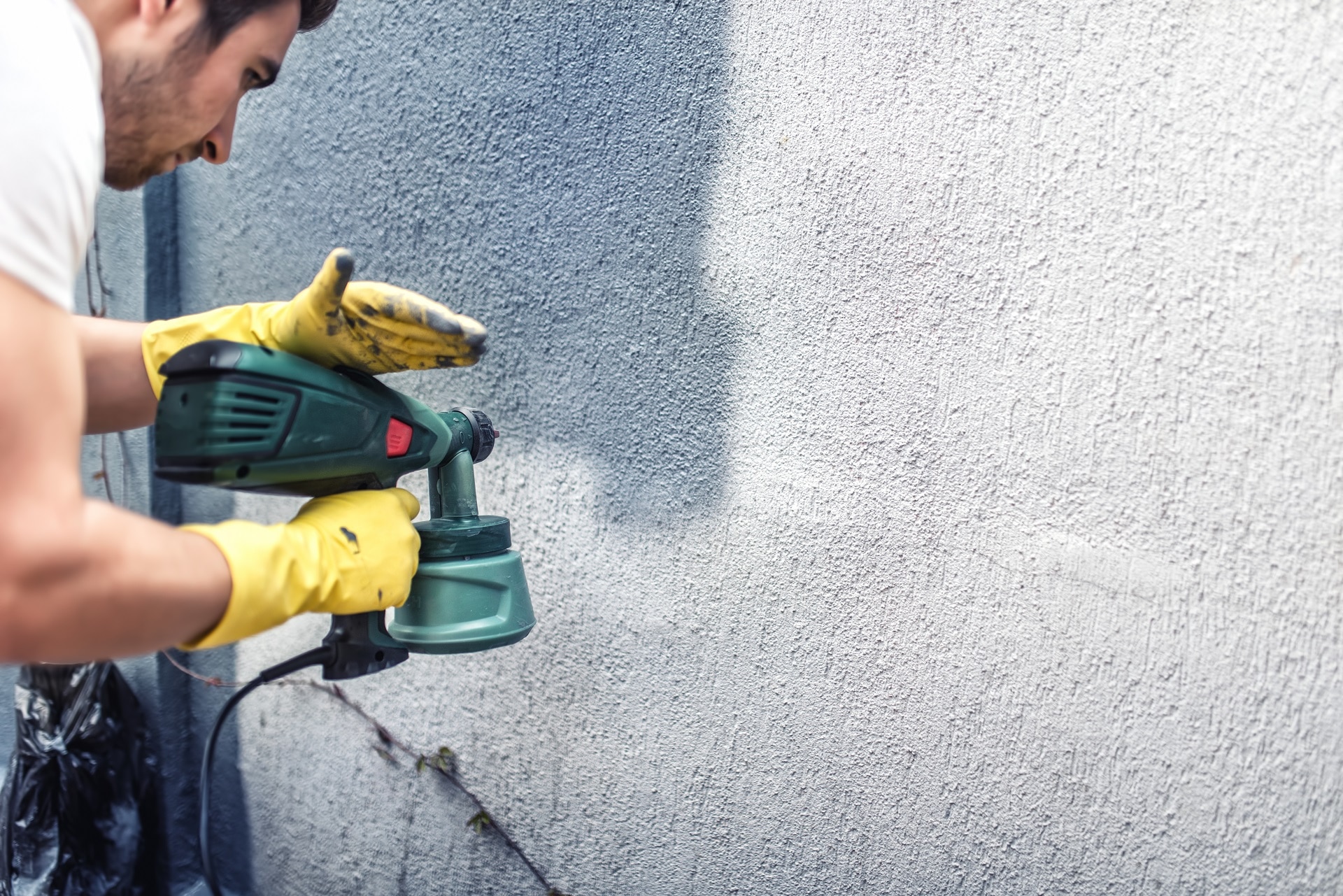Table of Contents

Just as the interior walls, the exterior ones need preparation before launching the painting works. What should you do to ensure the best effect? We’ve prepared some tips that will help you with that.
Painting may seem easy at first glance – just get yourself a tin of paint, dip the brush, and get things done! Unfortunately, it’s far more complicated than that. In order to achieve a long-lasting result, it is necessary to choose the appropriate materials and tools. And that’s just the tip of the iceberg! The preparation is essential to a beautiful effect. Those who paint the walls on their own instead of hiring a team of professionals to forget about that often. As a result, they end up with walls that need restoration within a few months because of cracks and peeling layers.
When you do some exterior painting, the preparation is even more important than in the case of interior works. The facade is exposed to varying weather conditions, often handling extreme temperatures and high humidity. Skipping the preparation part will thus most likely result in a low-quality effect. So, how to prepare for painting exteriors?
#1 Carry out an expertise
To prepare the walls for painting, you’ll need to carry out the expertise first. After, you’ll be able to determine the scope of work, knowing the current state of the walls. Its evaluation is crucial to the restoration’s success. It may turn out that the wall needs much more preparation than you initially expected because its structure is fractured or it has mold. Unfortunately, without professional know-how, it’s hard to come to any conclusions – that’s why we recommend reaching out for expert help.
#2 Choose the right paint
As you may know, the paints used for the exterior walls need to have different properties than the ones for the interiors. Inside, the conditions are relatively stable, so you can choose among various variants without worrying about their resistance. Outside, things are different. The exterior walls are always exposed to fluctuating temperature and humidity. In addition, they have to be resistant to rain, snow, wind, and UV radiation.
Which paints are the most durable in such changing conditions? We recommend choosing the acrylic paint in latex, enamel, or mixed variant. The acrylic paints are suitable for different purposes – you can use them to paint wood siding, vinyl siding, or even bricks. Just make sure that you picked the right one for a specific purpose by reading the label.
#3 Repair and clean the walls
If you’re repainting the exterior walls, make sure to remove the cracks and fill the holes before starting to paint. Then you can use sanding paper to make the surface smoother and more even. It’s also essential to clean the walls before applying the paint to ensure better adhesion.
#4 Apply the primer
Using a primer will also help you with better adhesion, but it also guarantees other benefits. You may have heard that primer is unnecessary when painting exteriors – but that’s a myth, particularly in the case of wooden surfaces. The primer provides a protective layer that prevents the wood from “bleeding” with tannins. This process may affect the color of the paint, so it’s better to avoid that. Note that the primer is unnecessary if you’re applying another layer of paint over the other.
#5 Choose the right time
Please don’t forget that early autumn and late spring are the best periods to paint the exterior walls due to moderate temperatures and relatively stable weather conditions. Painting in high temperatures is problematic – the paint dries up too quickly, making it difficult to distribute it evenly. On the other hand, if the temperatures are too low, it may take ages for one layer to dry up. In such conditions, work can take a lifetime.
If you incorporate these steps in the preparation part, you don’t have to worry about the effect! Even though you can do it on your own, it’s better to reach out for professional’s help. If you’re looking for professionals experienced with exterior works, reach out to our painters in London!







